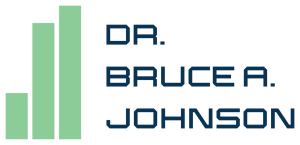4 Strategies Needed to Engage Students in Their Feedback
Do you look forward to providing student feedback, or do you dread the thought of having to read through student papers, especially when there is a deadline looming? Do students engage with and respond to your feedback? Would you like to be certain students are reading the feedback you take time to develop?
As an educator you may spend a significant amount of time developing feedback for your students, especially for their written assignments. The developmental progress of your students is strengthened when you provide meaningful feedback and they respond to it, either through their actions and improved performance, or their follow up questions to you. How do you react when students don’t respond to your feedback? What if they continue to make the same mistakes and their performance does not improve? Do you assume students aren’t reading the feedback or perhaps they aren’t interested in it?
It can be very frustrating when you have invested time and thought into the feedback, especially when you have addressed their individual developmental needs, and students do not seem responsive to it. If this happened to you it may be helpful to reflect upon the feedback provided and consider what techniques are likely to encourage students to be active participants in this process. The following techniques can help you create meaningful feedback, allowing you to discover its power and potential to address the academic and developmental needs of your students, while encouraging students to become engaged in and responsive to the process.

Avoid These Feedback Shortcuts
Instructors know students need more than a letter grade to prompt their continued development and this aligns with the premise of self-directed adult learners who want to be involved in the learning process. Students want to know why they earned the grade received. If they use grades as their primary source of motivation it becomes important to teach them to focus on more than their grades and instead understand the meaning of those grades and what can be learned from it. To accomplish this goal, feedback needs to address the content of what was written, along with the mechanics, and be done in a manner that encourages their progress.
What some instructors rely upon, typically when there is little time available, is canned comments or quickly written commentary. Comments such as “Good Job” offer little value to a student who has spent time developing a written project or assignment. The same is true when a score or a letter grade is the only feedback received for a written assignment or project. Feedback is most effective when it causes students to become further interested in the topics and more importantly, when it causes them to reflect upon their academic progress. When students are engaged in the feedback process, they are more likely to be responsive to what their instructor provided and learn from it.
The Student’s Perspective of Feedback
As you begin to review the feedback provided to your students, have you considered the students perspective and how they may interpret what you have written? For example, do you find that detailed narratives are more effective than one-word responses or brief comments? Are you talking at students or are you attempting to work with them? Students may be naturally defensive if an instructor is telling them what is wrong without providing supportive comments or constructive criticism.
An instructor’s approach to feedback, along with their attitude and belief about the potential of their students, has a direct bearing on the tone and delivery of the message developed. Student responsiveness may also be related to their perception of the instructor’s willingness to assist them. This reminds instructors of the importance and impact of their word choices, which can encourage students to be receptive to feedback or cause them to discount it.
There is a perception that grades are somehow tied to a student’s self-worth and this causes those students to give up easily when they perceive they have failed. Students think about failure most when they put in what they believe to be their best effort and receive feedback that conflicts with that belief and/or they watch their cumulative grade as an indicator of their progress and it continues to decline no matter how hard they try. Some students are not bothered by less than perfect outcomes and others will believe they have failed if they did not earn all “A” grades. This is why the feedback you provide must be explanatory in nature, to describe the strengths of the submission and the areas of needed development.

Are Students Not Responding to Your Feedback?
If you find that students are not responding to feedback there are additional questions to consider as a means of understanding your students’ perspective. Do you believe your students are not reading the feedback or is it possible that they are reading it and intentionally ignoring it?
Another possibility to consider is that students who are struggling from a developmental perspective may not fully understand or comprehend what you have written. If students are continuing to make the same types of mistakes or they receive a low score on the assignment, they may be experiencing frustration and not able to fully recognize how they need to improve their performance. Students may also be confused about the assignment expectations if the criteria have not been fully explained. From your students’ perspective you may also consider if they are comfortable asking questions and if they feel that you are receptive to their inquiries.
4 Strategies Needed to Engage Students in Their Feedback
The goal of feedback is to assess progress made with meeting assignment requirements and learning objectives, while also demonstrating progress with the development of specific skills, such as academic writing and critical thinking.
Step #1: Use Thought-Provoking Questions
One method of engaging students is to include reflective questions within your feedback which asks them to reflect upon the assignment, the related course topics, and their overall progress. The inclusion of thought-provoking questions may prompt students to evaluate their academic development, while providing an opportunity for meaningful dialogue to occur either within or with you. For example, when I insert commentary into a student’s paper, I’ll address the content and ask questions directly related to it so they will continue to learn.
Step #2: Develop Follow-Up Questions
If you have provided feedback that includes reflective questions and students do not respond, what approach would you utilize at that point? For an online instructor there is a greater challenge for engaging students because of the lack of face-to-face interaction. Would you consider posting follow-up questions and asking students to respond directly to them? It is understandable that you may not have a lot of time to develop feedback, ask reflective questions, and then develop additional follow-up questions. However, the result could be transformative for a student who needs the additional assistance.
Step #3: Provide Follow-Through
This method of follow through may be necessary only for students who have significant developmental challenges; however, consistent effort and follow-up may make a difference for those students who require additional assistance. Follow-through is also necessary whenever there is a student who is struggling, not making progress, making the same mistakes, or facing any other challenges. It is important to make certain they read the feedback and have an opportunity to discuss their progress.
You can put a follow-up note on your calendar and periodically check-in with the student to determine how they are progressing. This human element is especially effective for online courses, when students cannot see their instructor. When you provide some form of follow-up, you can check to find out if they have used the resources provided and how they feel about their progress.

Step #4: Use of Office Hours
Another technique to consider implementing, prior to an assignment and/or discussion due date, is the use of Office Hours. You can ask students to attend and ask general questions about the weekly discussion and assignment requirements. The immediate benefit is that students have an opportunity to see you. It’s the first step to building a connection with students. This will help them feel more comfortable asking questions and seeking assistance.
In addition, if a student is struggling and wants to talk about their feedback or academic development, which is a personal matter, you can schedule a private one-on-one Zoom meeting with them. I have found these face-to-face interactions are very useful for helping students who are struggling with any aspect of the course or their developmental needs.
Encourage Student Engagement
The purpose of devoting time and attention to the feedback you provide is to encourage student engagement in the class and the process of learning. Many of the techniques suggested require an additional investment of time; however, by implementing these strategies you may find that a proactive approach addresses non-responsive students in a way that encourages academic progress and a receptive attitude. This can also strengthen working relationships with students and help to facilitate effective communication. When you provide feedback that matters, students learn you care about their ongoing progress, and they are likely to start reading it week after week.
About Dr. Johnson
Dr. Bruce A. Johnson has 35 years of experience teaching and training adults. The first half of his career was spent in the field of Corporate Training and Development, with his last role as Manager of Training and Development.
Then in 2005, he made a transition into the field of distance learning. Over the past 19 years, he has been an online instructor, Faculty Development Specialist, Faculty Director, Faculty Development Manager, and Dissertation Chair.
Dr. Johnson is also an inspirational author, writer, and educator. His life mission is to teach, mentor, write, and inspire others. He has earned a PhD in Postsecondary and Adult Education, a Certificate in Training and Performance Improvement (TPI), a Master’s in Adult Education, and a Master of Business Administration (MBA).
As a scholar practitioner, Dr. J was published in a scholarly journal, and he has been a featured presenter at an international distance learning conference, along with presenting at three faculty conferences. He has also published over 230 online articles about adult learning, higher education, distance learning, online teaching, and mindset development. Dr. J published three books related to higher education, including two about online teaching.
Getting Down to Business: A Handbook for Faculty Who Teach Business.
Transform Adult Education: Expert Teaching Strategies for Educators.
Transform Online Teaching: Expert Strategies and Essential Resources Every Educator Needs.
Come join Dr. J’s group, Motivation for Transformation:
• Any time of the day, visit this group to find your source of motivation, to be inspired and more importantly, have your mindset transformed: Motivation for Transformation
Dr. J offers transformative resources:
Please visit Dr. J’s Books page on his website: Dr. J’s Books
You can also find Dr. J on the following social media sites: Instagram



